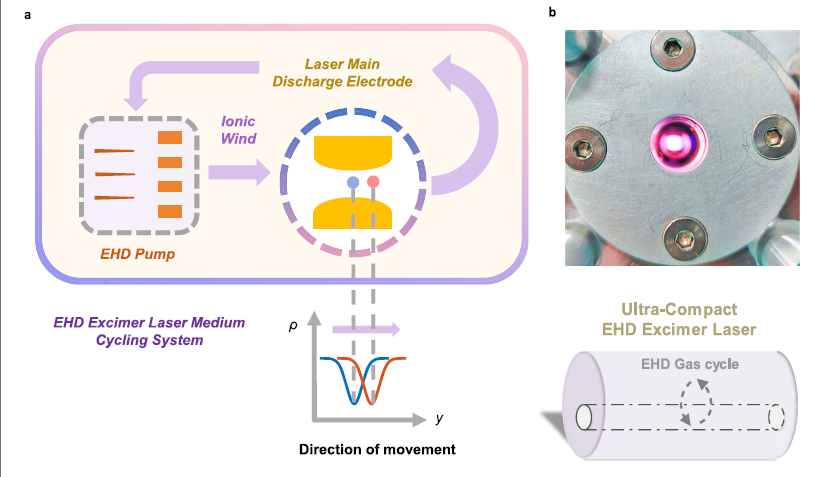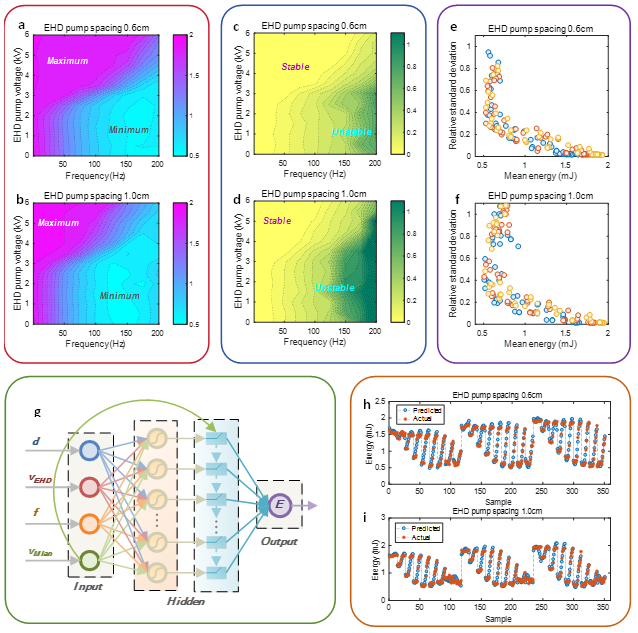
A research team led by Prof. LIANG Xu at the Hefei Institutes of Physical Science, Chinese Academy of Sciences, has developed an ultra-compact excimer laser—roughly the size of a thermos bottle.
The results were recently published in APL Photonics.
Excimer lasers, as critical deep ultraviolet sources, are widely used in scientific research, industrial processing, and environmental monitoring. However, traditional systems rely on mechanical gas pumps for medium circulation, resulting in large size, high noise, and significant vibration. These limitations restrict their application in field environments, marine exploration, and airborne platforms.
To overcome these challenges, the team innovatively replaced mechanical pumps with a multi-needle corona discharge Electrohydrodynamics (EHD) pump, eliminating moving parts and reducing system volume to Ø130 mm × 300 mm. Using a self-developed non-invasive point schlieren velocimetry technique, the team measured a gas flow velocity of 1.27 m/s inside the laser cavity. Operating at 100 Hz, the system achieved a gas refresh rate of 6.35, delivering pulse energy exceeding 2 mJ while maintaining outstanding energy stability, with a relative standard deviation as low as 1%.
Notably, the researchers observed a unique explosive transition behavior in the laser’s pulse energy under certain conditions. Through complex photochemical reaction analysis of the XeCl excimer network, they linked this phenomenon to a threshold-driven burst in photon flux, uncovering the microscopic mechanism behind macroscopic laser performance shifts.
Furthermore, the team developed an interpretable machine learning model capable of predicting energy transitions across a wide range of operating parameters.
This tool offers valuable support for the optimization and control of ultra-compact excimer laser systems in practical applications.

Ultra-compact excimer laser based on EHD (Image by SHAO Jingzhen)

Mechanism analysis and machine learning prediction of ultra-compact XeCl laser energy explosive transition phenomenon (Image by SHAO Jingzen)